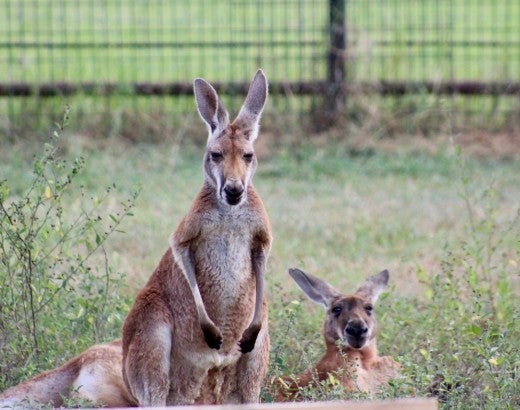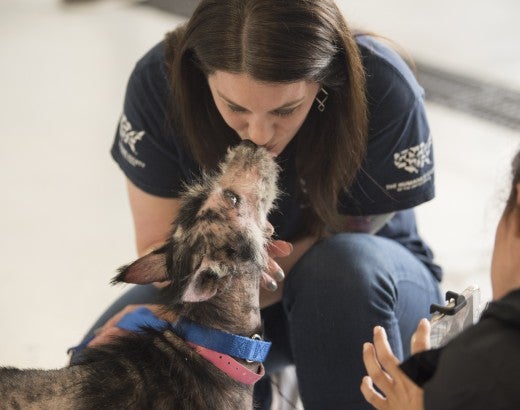Over the years at the only zoo in Puerto Rico, hurricanes, COVID, damaged infrastructure and alleged underfunding had taken a terrible toll. When it became clear that the facility no longer had the resources to care for its hundreds of animals and would have to close, we, along with several other groups, were asked to help.
In May, our staff joined other organizations in the long process of removing all the animals at the zoo and finding proper placement for them across the U.S. Members of our team spent a week on the ground in Puerto Rico, working on care, evaluations and travel preparations for the animals. Our team found that many of the animals were malnourished from inappropriate diets, displaying self-harming behaviors due to stressful, overcrowded conditions with little enrichment. Providing the animals the care they needed while also planning for their futures was a gargantuan task that involved many steps and coordination.

Now that the 22 animals who went to Black Beauty Ranch have completed months of necessary quarantine and rehabilitation, finally we are seeing the joyful results of all this work.
Last week, the 10 rescued lemurs were released from their large quarantine area into their new habitat at Black Beauty Ranch, our sprawling sanctuary in Murchison, Texas. In Puerto Rico, they were found huddled together in hard, dark enclosures with no enrichment. But their new home is lush with tall trees reaching into the sky. Without a moment’s hesitation, their instincts to climb propelled them forward and up, higher and higher into the branches.

These bounding and leaping lemurs are a manifestation of a key priority of our work: helping animals in crisis. Black Beauty Ranch exists to provide sanctuary to hundreds of domestic and wild animals rescued from research laboratories, circuses, the pet trade, roadside zoos and other circumstances of neglect and cruelty.
It’s wonderful to hear about how these new residents are making themselves at home at our sanctuary. The four macaques (El, Hopper, Max and Robin) are no longer huddling together out of fear in rusty, cramped cages; they’re now exploring trees for the first time and bellyflopping into pools of water. The two llamas (Abbott and Costello) have bonded with sheep and goats in their 2-acre pasture. The ostrich, Reptar, who once pulled his feathers out because of stress, has found a friend in a bighorn sheep named Lilly. Sweets and Booth, the two coatis, are practicing their natural climbing skills for the first time; Sweets has fully recovered from a previously untreated injury to his tail. The three emus (Delta, Blue and Echo), who arrived severely underweight, are gaining weight and strength.

Thanks to the massive effort and collaboration of many animal organizations, nearly 700 animals were removed from the zoo and a government holding facility, which was housing wild animals that are prohibited, confiscated or willingly surrendered on the island.
In the humane world we are trying to create, no animal is left to languish because of unfortunate circumstances. I’m heartened to know that these animals are thriving.
Follow Kitty Block @HSUSKittyBlock.



